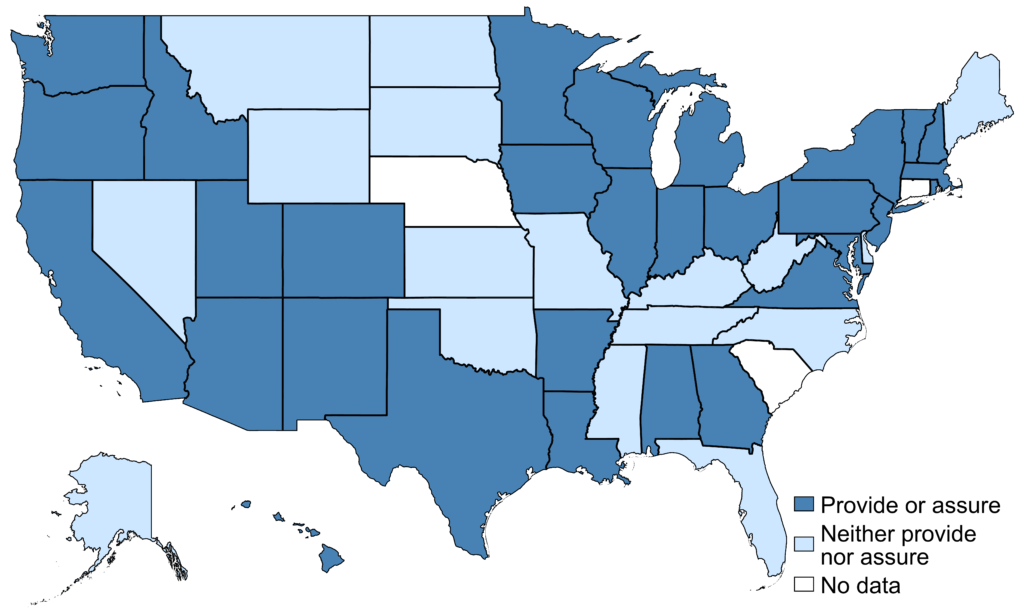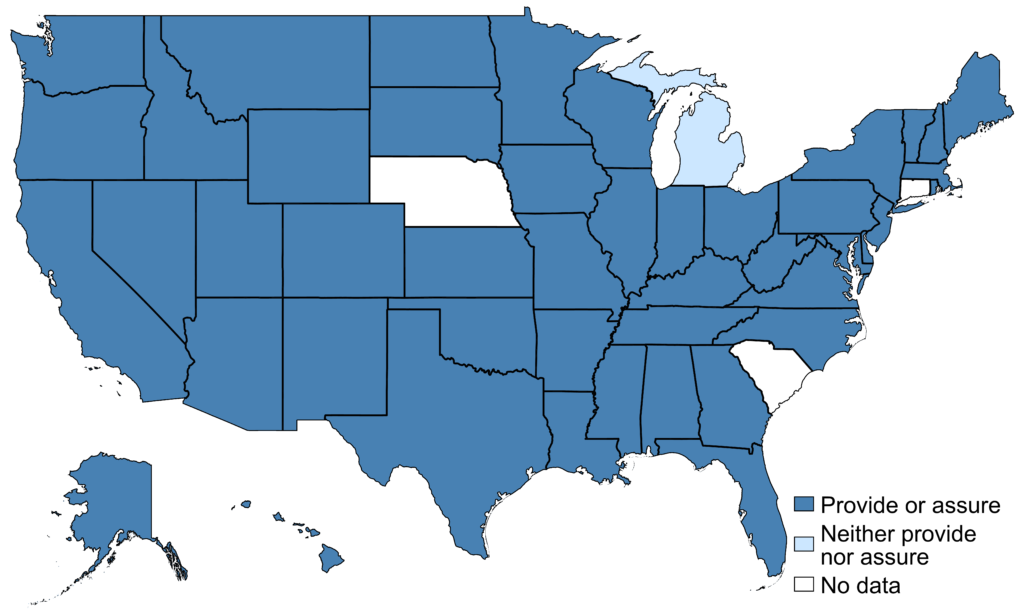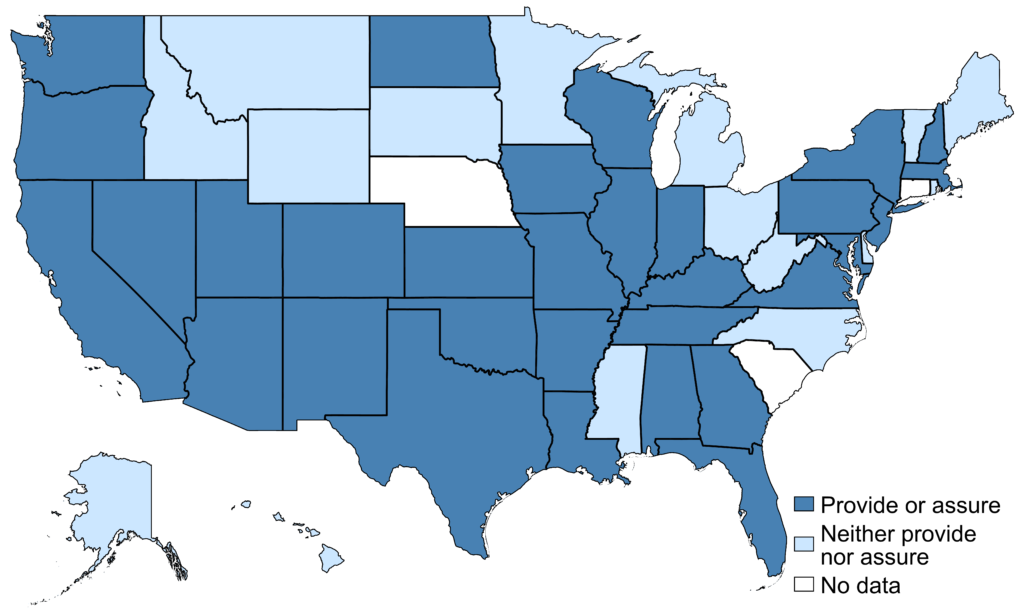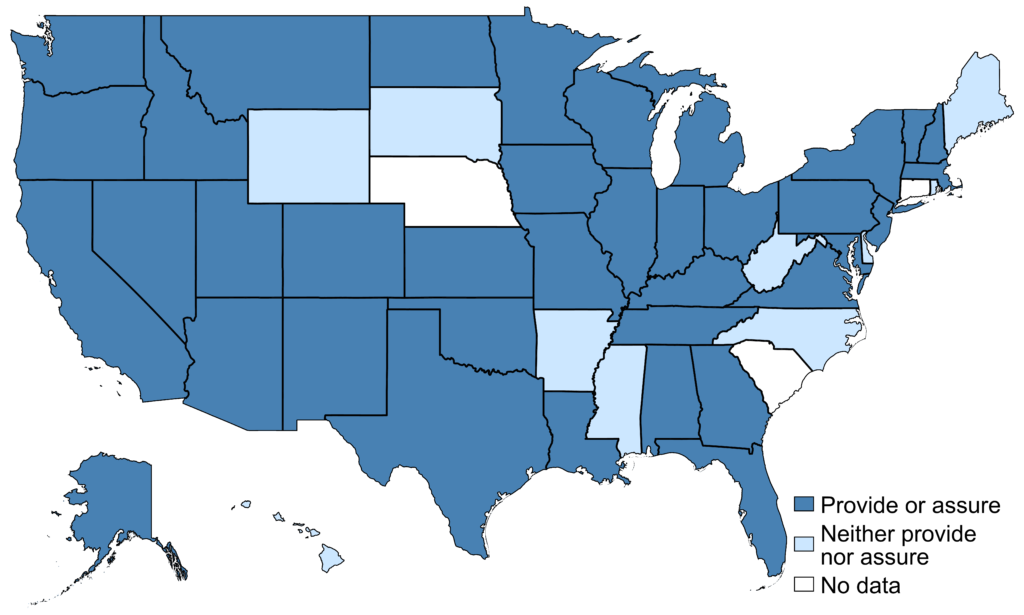


It doesn’t require deep thinking to appreciate the importance of public health laboratories to national health security. Labs detect disease outbreaks as early and quickly as possible. Labs accurately identify pathogens in air, water, soil, food, humans and other animals. Labs rapidly convey test results to public health responders who can close restaurants and schools, quarantine infectious people, evacuate neighborhoods, issue public warnings and otherwise interrupt the cascade of exposure and transmission. In sum, labs are the central nervous system of the health security enterprise.
So, can you identify the most heavily questioned and hotly contested element of the National Health Security Preparedness Index? Believe it or not, it is the set of measures that indicate what public health laboratories do.
The controversy stems from the concept of assurance. And it flows from the many different ways that public health responsibilities get divvied up across state governments.
In most states, multiple laboratories exist, operated by different state agencies. Public health laboratories are often organized within state health agencies, but sometimes they are organized as independent state institutions or as part of state university systems. Environmental laboratories are often located within state environmental protection agencies, which may or may not fall under the umbrella of a health-related super agency. Agricultural laboratories are found within state agriculture agencies. And of course there are clinical labs located within state hospitals, crime labs located within state law enforcement agencies, and medical examiner’s labs located somewhere in this mix. Which lab is responsible for testing food samples for pathogens? Which lab tests air, soil or other environmental samples for harmful substances like lead? Which lab tests public drinking water sources, private wells, or recreational bodies of water? Which lab tests the white powder found in an office building?
Political dynamics add to the controversies surrounding heterogeneity in laboratory structure. Environmental and agricultural labs conduct testing largely in support of the regulatory enforcement duties carried out by their parent agencies. Some of the tests performed by public health labs also fulfill regulatory purposes, but these labs typically have a broader surveillance mission and a wider scope of responsibilities. Concerns about industry capture and political interference in testing exist, and examples that fuel these concerns are not hard to find.
Figure 1: State public health laboratory roles in testing for hazards in air, 2016

Long ago, laboratory experts at CDC and at state public health laboratories recognized the problems that can arise when testing capabilities exist in one agency but interpretation and response capabilities reside in other corners of state government. Information does not always flow seamlessly through government bureaucracies. The legal authority to act and the scientific knowledge about what to do are distributed unevenly across agencies. This situation can cause delays in responding effectively to hazards detected through laboratory testing. And delays can have serious human and economic consequences.
The solution devised by CDC and its state laboratory partners at APHL involve two key ingredients:
This “provide or assure” recommendation for state public health laboratories forms the basis of CDC’s and APHL’s Comprehensive Public Health Laboratory System definition and its Core Functions and Capabilities of State Public Health Laboratories framework. Moreover, this recommendation is formalized in the federal Healthy People 2020 health objectives for the nation.
The National Health Security Preparedness Index follows the recommendations of CDC and APHL when measuring public health laboratory capabilities. In fact, we use a series of measures constructed from periodic surveys that APHL fields with state public health laboratory administrators. The measures in this series indicate whether or not the state public health laboratory “provides or assures” testing of water, air, soil, and human samples for specific pathogens and hazards. A state receives credit for having a specified capability if the public health laboratory directly performs the test, OR if it assures that another laboratory entity performs the test.
Figure 2: State public health laboratory roles in testing public drinking water systems, 2016

The controversy arises in states where a certain type of test is performed by an environmental or agricultural laboratory, but there is no assurance function performed by the public health laboratory. In these cases, the capability to test for a certain hazard exists. But the capability to assure that the testing and reporting function is carried out effectively does not exist within the public health laboratory. Such states do not comply with the CDC/APHL recommendation. By following the CDC/APHL recommendations, the Index measures the assurance capability rather than the testing capability alone.
And as you can imagine, some states don’t agree with this way of measuring laboratory capabilities.
Figure 3: State public health laboratory roles in testing hazardous waste, 2016

The CDC/APHL “provide or assure” recommendation for public health laboratory testing reflects the consensus opinion of experts and experienced laboratory professionals at the dawn of the 21st century. As a recommendation based more on experience than on rigorous scientific evidence, it should remain open to continued evaluation, critical analysis, and revisions over time. The Index continues to monitor the scientific and professional literature on this topic, and we stand ready to update our measurement approaches as professional norms and standards evolve.
One issue in need of clarification involves how the assurance function should be defined and carried out by public health laboratories across the U.S. The APHL surveys used in constructing the Index rely on information that is self-reported by individual laboratory administrators. The surveys provide little guidance about what is meant by “assurance” and how laboratories should carry out this function in cases where they do not directly perform the testing. Consequently, it is left up to the interpretation of individual administrators as to whether or not their laboratory carries out the assurance function.
Figure 4: State public health laboratory roles in testing for hazards in soil, 2016

Is assurance really all that important? Isn’t it enough to know that testing exists somewhere within the state bureaucracy?
Clearly some people think so. But in the absence of clear scientific evidence, the Index relies upon well-reasoned professional recommendations like those from CDC and APHL.
It is not very difficult to find real-world examples that support the underlying logic of the “provide or assure” recommendation. As one example, Arizona’s environmental laboratory has responsibility for testing the safety of public drinking water systems, but it does not have the legal authority to notify the public of potential hazards. As a consequence, residents of one community waited years to learn that their drinking water supply had seriously elevated levels of uranium contamination from a defunct mine. The Flint water crisis provides another recent example of the problems posed by organizational complexity in lab testing and response. In that case, Michigan’s environmental agency held responsibility for overseeing testing of Flint’s drinking water system, but the state’s public health agency had responsibility for monitoring test results for reportable diseases like Legionnaires’. Delays in connecting the dots between water test results and disease surveillance enabled the hazards in Flint to persist and grow unchecked.
We hope the Index will stimulate further dialogue, discussion, and debate about these important issues in health security. Publicly accessible data, rigorous analysis, and critical thinking lead the way to a clearer understanding of actions that can strengthen health protections for everyone.